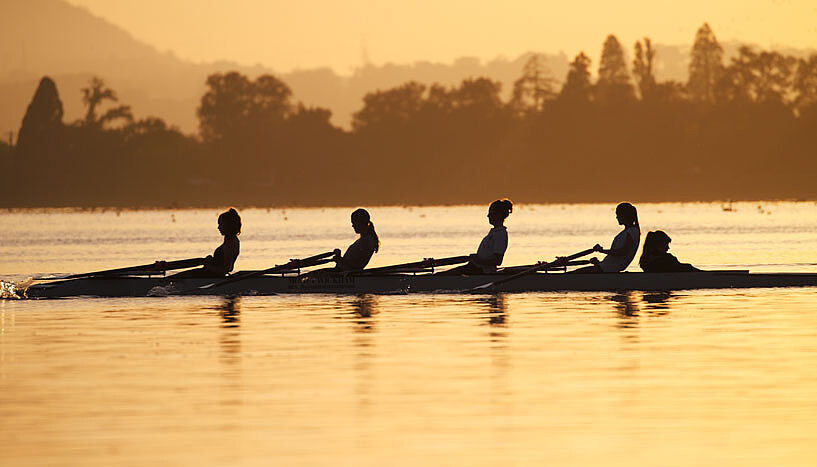Prehistoric women had stronger arms than today’s elite rowing teams
29. November 2017
The analysed arm bones of Neolithic women were 11.16% stronger for their size than the modern rowers (Copyright: Ed Dunens; flickr.com; CC BY 2.0).
The first study to compare ancient and living female bones shows the routine manual labour of women during early agricultural eras was more gruelling than the physical demands of rowing in Cambridge University’s famously competitive boat clubs . Researchers from the University of Cambridge and Ron Pinhasi from the University of Vienna say the findings suggest a "hidden history" of women’s work stretching across millennia.
A new study comparing the bones of Central European women that lived during the first 6,000 years of farming with those of modern athletes has shown that the average prehistoric agricultural woman had stronger upper arms than living female rowing champions. This physical prowess was likely obtained through tilling soil and harvesting crops by hand, as well as the grinding of grain for as much as five hours a day to make flour.
Until now, bioarchaeological investigations of past behaviour have interpreted women’s bones solely through direct comparison to those of men. However, male bones respond to strain in a more visibly dramatic way than female bones. The scientists say this has resulted in the systematic underestimation of the nature and scale of the physical demands borne by women in prehistory. "This is the first study to actually compare prehistoric female bones to those of living women," said Dr Alison Macintosh, lead author of the study published today in the journal Science Advances.
"By interpreting women’s bones in a female-specific context we can start to see how intensive, variable and laborious their behaviours were, hinting at a hidden history of women’s work over thousands of years." The study analysed the arm (humerus) and leg (tibia) bones of living women who engage in a range of physical activity: from runners, rowers and footballers to those with more sedentary lifestyles. The bones strengths of modern women were compared to those of women from early Neolithic agricultural eras through to farming communities of the Middle Ages.
"It can be easy to forget that bone is a living tissue, one that responds to the rigours we put our bodies through. Physical impact and muscle activity both put strain on bone, called loading. The bone reacts by changing in shape, curvature, thickness and density over time to accommodate repeated strain," said Macintosh. "By analysing the bone characteristics of living people whose regular physical exertion is known, and comparing them to the characteristics of ancient bones, we can start to interpret the kinds of labour our ancestors were performing in prehistory."
The Neolithic women analysed in the study (from 7400-7000 years ago) had similar leg bone strength to modern rowers, but their arm bones were 11-16% stronger for their size than the rowers, and almost 30% stronger than typical Cambridge students. A possible explanation for this fierce arm strength is the grinding of grain. "We can’t say specifically what behaviours were causing the bone loading we found. However, a major activity in early agriculture was converting grain into flour, and this was likely performed by women," said Macintosh. For millennia, grain would have been ground by hand between two large stones called a saddle quern. In the few remaining societies that still use saddle querns, women grind grain for up to five hours a day.
Publikation in "Science Advances":
A.A. Macintosh; J.T. Stock, R. Pinhasi: Prehistoric women's manual labor exceeded that of athletes through the first 5500 years of farming in Central Europe. Science Advances
sciadv.aao3893
Wissenschaftlicher Kontakt
Ron Pinhasi, PhD
Department für Evolutionäre AnthropologieUniversität Wien
1090 - Wien, Althanstraße 14 (UZA I)
+43-1-4277-547 21
+43-664-60277-547 21
ron.pinhasi@univie.ac.at
Rückfragehinweis
Mag. Alexandra Frey
Media Relations ManagerUniversität Wien
1010 - Wien, Universitätsring 1
+43-1-4277-17533
+43-664-8175675
alexandra.frey@univie.ac.at
